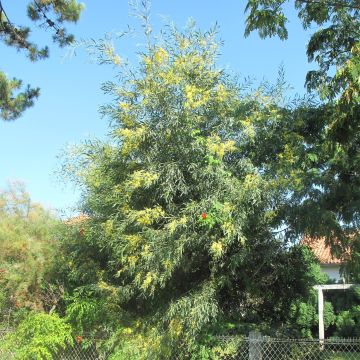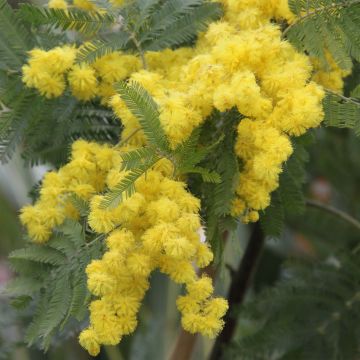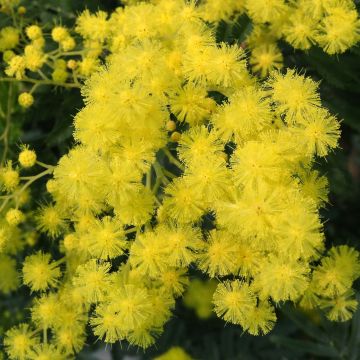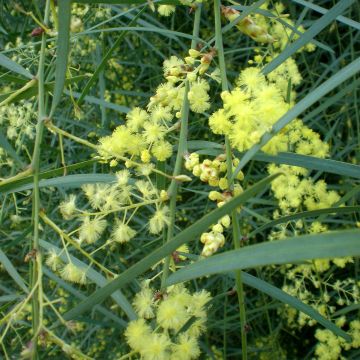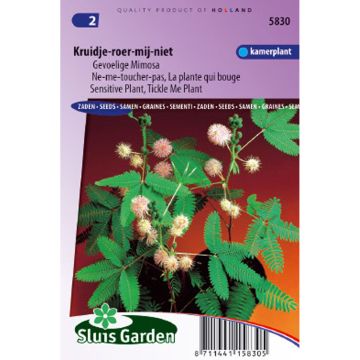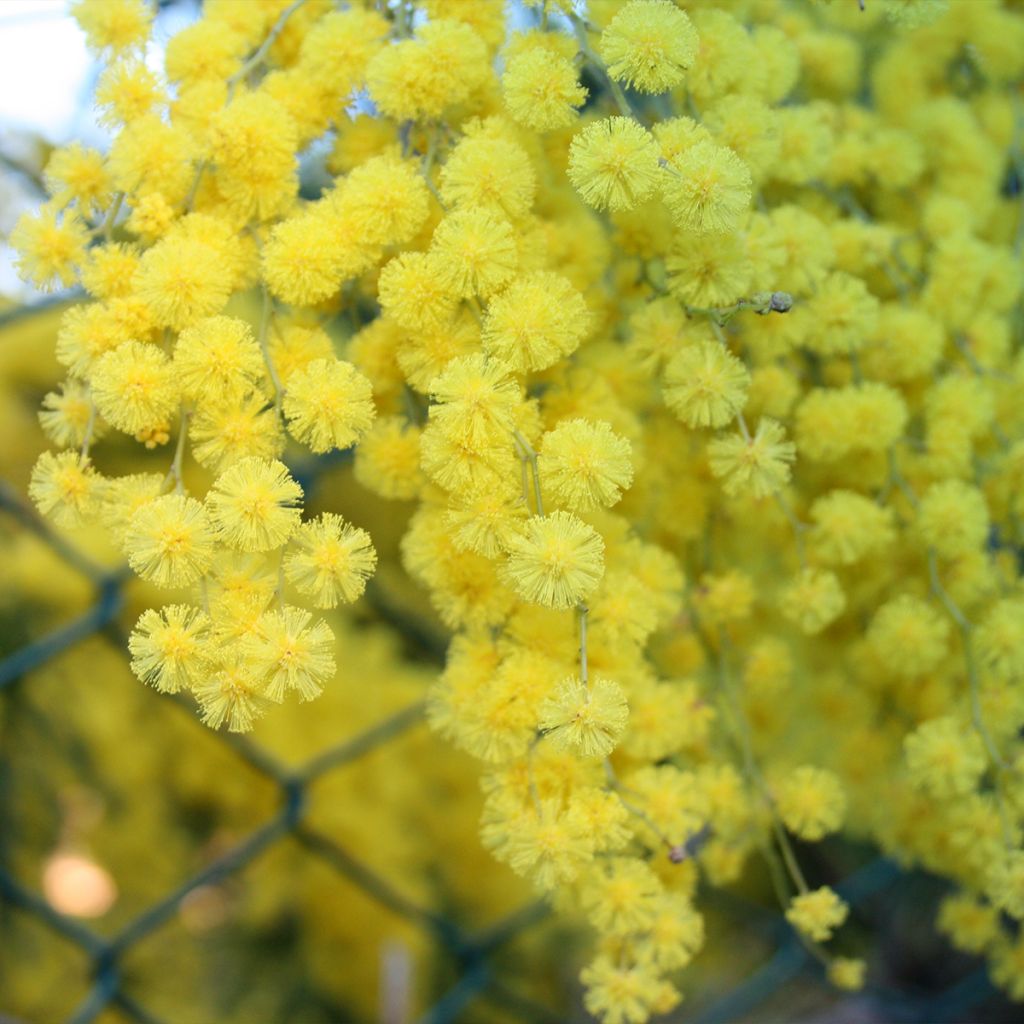

Acacia howittii Clair De Lune
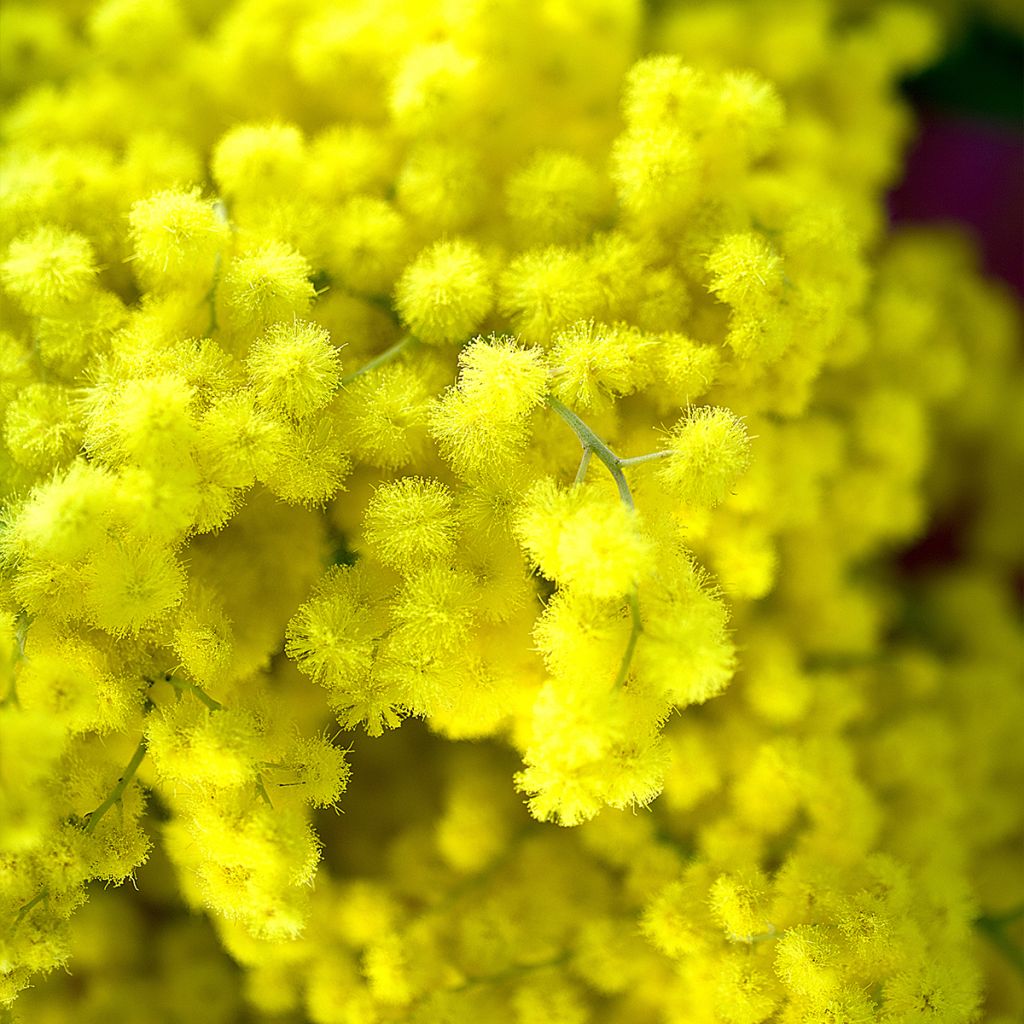

Acacia howittii Clair De Lune
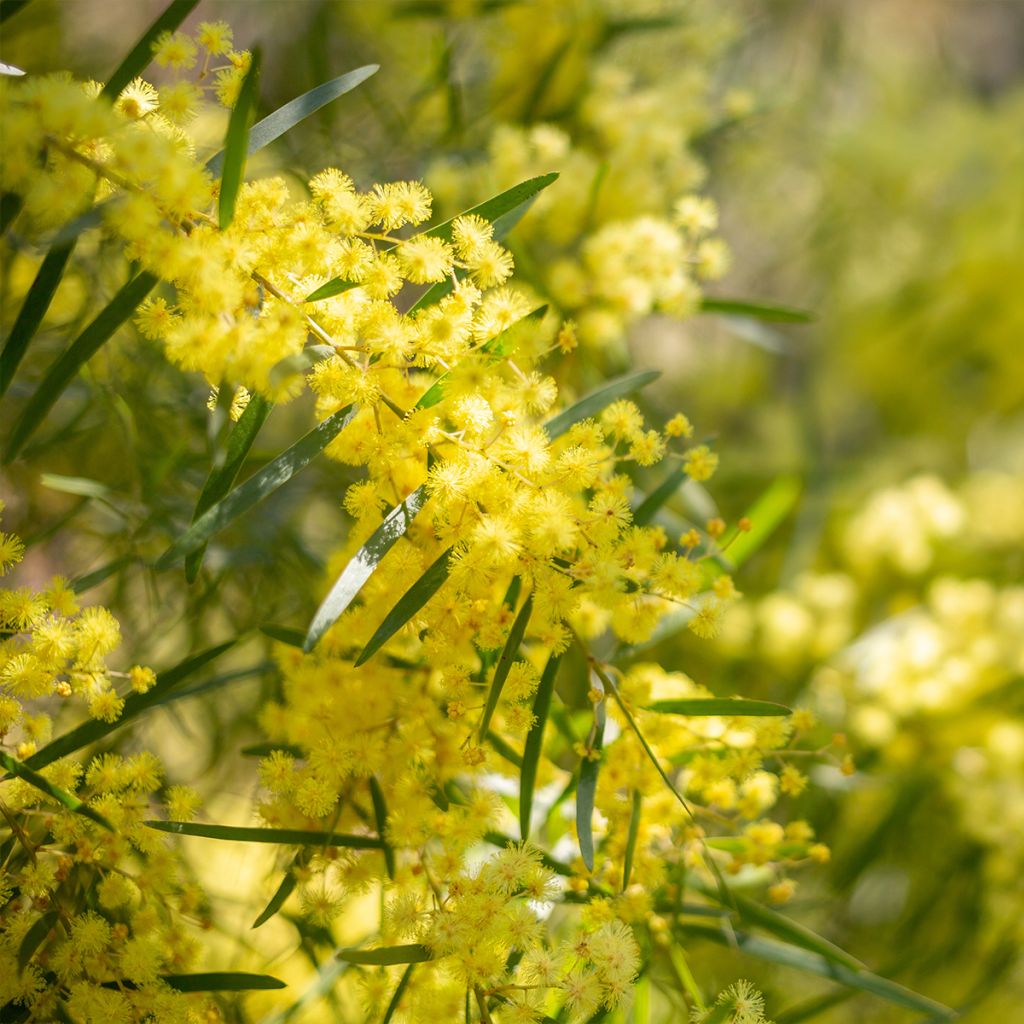

Acacia howittii Clair De Lune
Acacia howittii Clair De Lune
Acacia howittii Clair De Lune
Sticky Wattle, Howitt's Wattle
Based on the photograph, I can only say that it is UNIQUE!!!!!
Amparo, 05/07/2022
Why not try an alternative variety in stock?
View all →This plant carries a 24 months recovery warranty
More information
We guarantee the quality of our plants for a full growing cycle, and will replace at our expense any plant that fails to recover under normal climatic and planting conditions.
Oversize package: home delivery by special carrier from €6.90 per order..
Express home delivery from €8.90.
Delivery to Corse prohibited: UE law prohibits the import of this plant from mainland France to Corse as part of the fight against Xylella fastidiosa. Please accept our sincere apologies.
More information
Does this plant fit my garden?
Set up your Plantfit profile →
Description
Acacia howittii 'Clair de Lune' is a cultivar resulting from the hybridisation of A. howittii. It is very ornamental with a weeping, compact habit and generous lemon-yellow, fragrant flowering in spring. It is a small tree or medium-sized bush whose thin and trailing stems and leaves form a graceful silhouette that works wonders when planted alone in a small garden or near a terrace. Its foliage consists of linear phyllodes that emerge in a magnificent purple-red colour before turning light green and persisting throughout the year. From March to April, it is covered with dense clusters of fluffy globular flowers, like a golden rain. It is not very hardy but greatly appreciates heat and is perfectly resistant to drought, thriving in full sun or partial shade in well-drained soil in warm regions. In colder climates, you can grow it in a large container that will overwinter indoors in a bright, frost-free room.
Mimosas should not be confused with the tree we call acacia. They belong to the Fabaceae family, just like alfalfa and lupins. Acacia howittii 'Clair de Lune' is a hybrid originating from the French Riviera, probably resulting from a cross with A. howittii and probably A. fimbriata, with which it seems to share many characteristics: leaf type, habit, colour, and flowering time. It is often grafted onto Acacia retinodes (the four seasons mimosa) which has the advantage of not producing suckers and allows cultivation in calcareous and very dry soils. In this case, the less hardy root stock perishes below -5°C (23°F) if not protected.
'Clair de Lune' exhibits a compact, gracefully weeping habit, carried by long angular and wrinkled trailing branches, with colours ranging from green to purple. In our climates, it reaches a height of about 4m (13ft) with a spread of 3m (10ft). Its growth is rapid; a specimen planted in the ground for 2 years can already exceed 2m (7ft) in height in a warm climate. Its lifespan is around 10 to 15 years. Numerous flower buds appear in late summer. The actual flowering usually takes place in March-April, depending on the climate and weather conditions, and lasts about 3 weeks. Just before blooming, the buds turn red. They open into small round flowers that are clusters of bright lemon-yellow stamens gathered in the axils of the leaves located towards the ends of the branches. Their fragrance is more noticeable during the hottest hours of the day. Its evergreen foliage consists of small leaves called phyllodes, with an oval-lanceolate or even linear shape, velvety and slightly sticky to the touch. They are leathery and have a light green colour. The young reddish-purple shoots contrast beautifully with the bright lemon-yellow of the flowering.
When planted in the ground in mild climates, Acacia howittii 'Clair de Lune' can be placed as a standalone specimen, sheltered from strong winds, or used in shrub beds. In favourable climates, it is often used to create a superb green screen, either alone or alongside olearias, for example. It can be planted with other tender shrubs with an exotic appearance, such as Caesalpinia gilliesii, Jacaranda mimosifolia (Blue Flamboyant), Sesbania punicea, escallonias, or Grevillea. To accompany its early spring flowering, it can be paired with Prunus triloba, Japanese quinces, or Teucrium fruticans 'Azureum'. It can be grown in a container, protecting it from winter frost in a minimally heated greenhouse or conservatory.
Report an error about the product description
Acacia howittii Clair De Lune in pictures
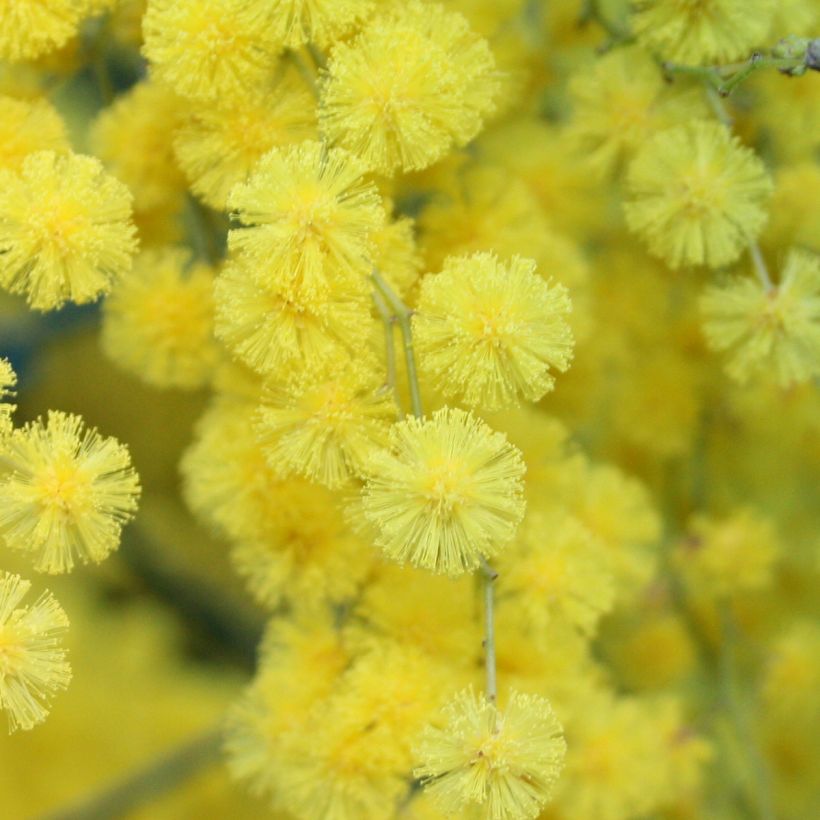

Plant habit
Flowering
Foliage
Botanical data
Acacia
howittii
Clair De Lune
Fabaceae
Sticky Wattle, Howitt's Wattle
Cultivar or hybrid
Other Acacia - Wattle
Planting and care
Plant in spring, in March or April, in a very sunny position, sheltered from strong winds. In mild climates, plant in autumn. It is most often grafted onto Acacia retinodes, which dies below -5°C (23°F) if not well protected in winter: surround the rootstock with a thick mulch doubled with a thick winter cover as a precaution. This bush is not demanding on the nature of the soil, but it should be well-drained. As it tolerates drought once established, watering is not necessary in open ground cultivation. Light pruning is recommended after flowering: shorten the branches that have bloomed by about half their length. This operation prevents the formation of pods that unnecessarily exhaust the plant.
It is sensitive to cold; as soon as temperatures approach 0°C (32°F), it is advisable to install a thick mulch at its base to protect the root stock and roots, and to cover it with winter protection.
In the case of container cultivation, repot every two years in a large container in spring. Water regularly; the root ball should not completely dry out between two waterings. In cold regions, overwinter it in a bright and cool but frost-free location.
The combination of heat and humidity can promote the sudden and unexplained decline of a mimosa that seemed healthy. In this case, the culprits are either Cylindrocladium, a microscopic fungus that attacks the collar of the plant, turning it black, or Phytophthora, which penetrates through the roots and causes the plant to perish within a few days. Mimosas grafted onto Acacia retinodes are well adapted to summer drought and poor, limestone soils, which do not tolerate constantly moist soil, especially in hot weather.
The other enemies of this mimosa are psyllid (false aphid), frosted scale (Metcalfa pruinosa), and Australian cochineal (Icerya purchasi), which are white, fluffy, and cottony. To limit their development, spray with nettle manure or diluted black soap at 5%. Treatment with white oils is also effective. Also, perform a daily thorough inspection of the branches, accompanied, if necessary, by manual collection of the scale insects (if you have the courage).
Planting period
Intended location
Care
-
, onOrder confirmed
Reply from on Promesse de fleurs
Haven't found what you were looking for?
Hardiness is the lowest winter temperature a plant can endure without suffering serious damage or even dying. However, hardiness is affected by location (a sheltered area, such as a patio), protection (winter cover) and soil type (hardiness is improved by well-drained soil).

Photo Sharing Terms & Conditions
In order to encourage gardeners to interact and share their experiences, Promesse de fleurs offers various media enabling content to be uploaded onto its Site - in particular via the ‘Photo sharing’ module.
The User agrees to refrain from:
- Posting any content that is illegal, prejudicial, insulting, racist, inciteful to hatred, revisionist, contrary to public decency, that infringes on privacy or on the privacy rights of third parties, in particular the publicity rights of persons and goods, intellectual property rights, or the right to privacy.
- Submitting content on behalf of a third party;
- Impersonate the identity of a third party and/or publish any personal information about a third party;
In general, the User undertakes to refrain from any unethical behaviour.
All Content (in particular text, comments, files, images, photos, videos, creative works, etc.), which may be subject to property or intellectual property rights, image or other private rights, shall remain the property of the User, subject to the limited rights granted by the terms of the licence granted by Promesse de fleurs as stated below. Users are at liberty to publish or not to publish such Content on the Site, notably via the ‘Photo Sharing’ facility, and accept that this Content shall be made public and freely accessible, notably on the Internet.
Users further acknowledge, undertake to have ,and guarantee that they hold all necessary rights and permissions to publish such material on the Site, in particular with regard to the legislation in force pertaining to any privacy, property, intellectual property, image, or contractual rights, or rights of any other nature. By publishing such Content on the Site, Users acknowledge accepting full liability as publishers of the Content within the meaning of the law, and grant Promesse de fleurs, free of charge, an inclusive, worldwide licence for the said Content for the entire duration of its publication, including all reproduction, representation, up/downloading, displaying, performing, transmission, and storage rights.
Users also grant permission for their name to be linked to the Content and accept that this link may not always be made available.
By engaging in posting material, Users consent to their Content becoming automatically accessible on the Internet, in particular on other sites and/or blogs and/or web pages of the Promesse de fleurs site, including in particular social pages and the Promesse de fleurs catalogue.
Users may secure the removal of entrusted content free of charge by issuing a simple request via our contact form.
The flowering period indicated on our website applies to countries and regions located in USDA zone 8 (France, the United Kingdom, Ireland, the Netherlands, etc.)
It will vary according to where you live:
- In zones 9 to 10 (Italy, Spain, Greece, etc.), flowering will occur about 2 to 4 weeks earlier.
- In zones 6 to 7 (Germany, Poland, Slovenia, and lower mountainous regions), flowering will be delayed by 2 to 3 weeks.
- In zone 5 (Central Europe, Scandinavia), blooming will be delayed by 3 to 5 weeks.
In temperate climates, pruning of spring-flowering shrubs (forsythia, spireas, etc.) should be done just after flowering.
Pruning of summer-flowering shrubs (Indian Lilac, Perovskia, etc.) can be done in winter or spring.
In cold regions as well as with frost-sensitive plants, avoid pruning too early when severe frosts may still occur.
The planting period indicated on our website applies to countries and regions located in USDA zone 8 (France, United Kingdom, Ireland, Netherlands).
It will vary according to where you live:
- In Mediterranean zones (Marseille, Madrid, Milan, etc.), autumn and winter are the best planting periods.
- In continental zones (Strasbourg, Munich, Vienna, etc.), delay planting by 2 to 3 weeks in spring and bring it forward by 2 to 4 weeks in autumn.
- In mountainous regions (the Alps, Pyrenees, Carpathians, etc.), it is best to plant in late spring (May-June) or late summer (August-September).
The harvesting period indicated on our website applies to countries and regions in USDA zone 8 (France, England, Ireland, the Netherlands).
In colder areas (Scandinavia, Poland, Austria...) fruit and vegetable harvests are likely to be delayed by 3-4 weeks.
In warmer areas (Italy, Spain, Greece, etc.), harvesting will probably take place earlier, depending on weather conditions.
The sowing periods indicated on our website apply to countries and regions within USDA Zone 8 (France, UK, Ireland, Netherlands).
In colder areas (Scandinavia, Poland, Austria...), delay any outdoor sowing by 3-4 weeks, or sow under glass.
In warmer climes (Italy, Spain, Greece, etc.), bring outdoor sowing forward by a few weeks.

































